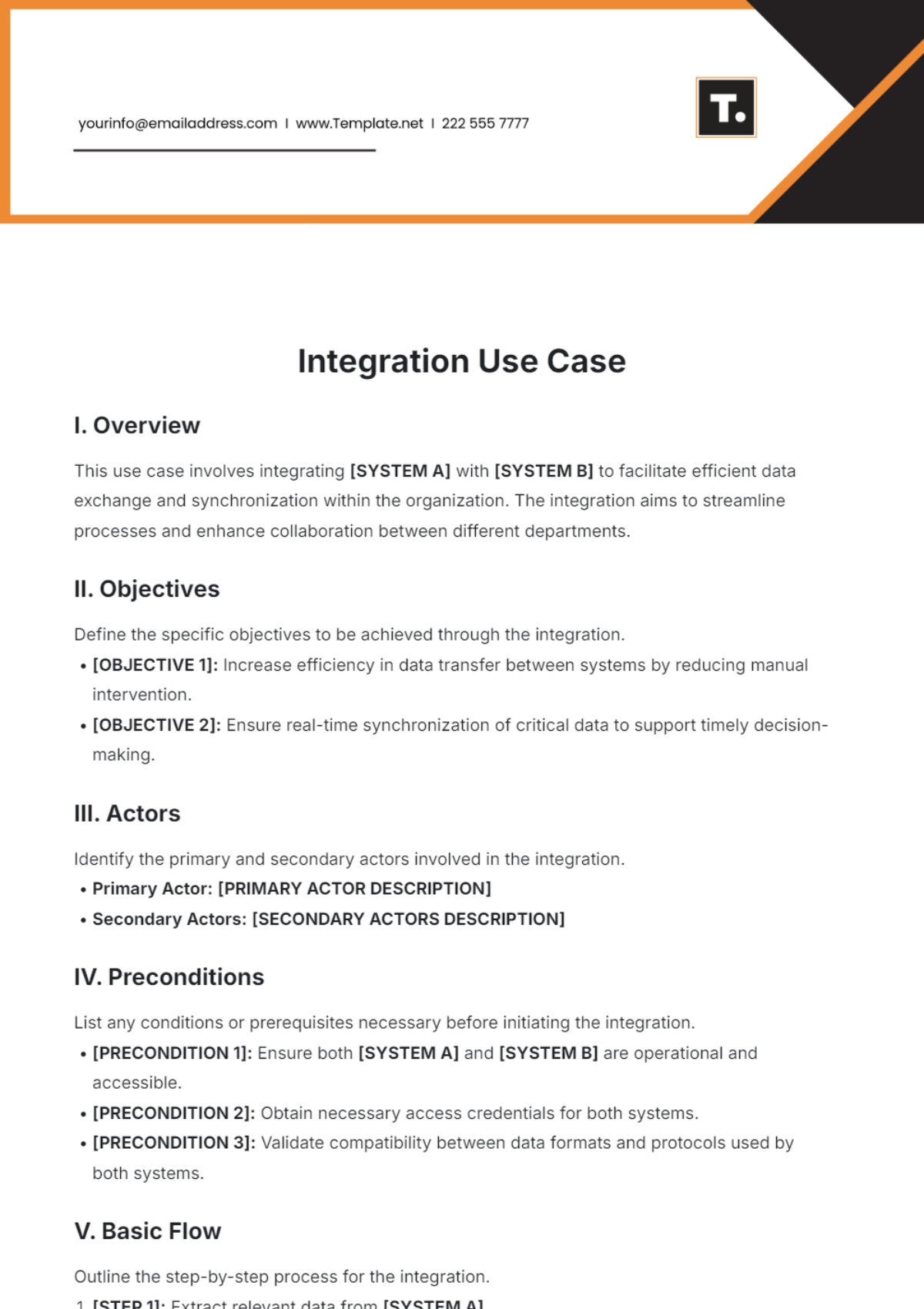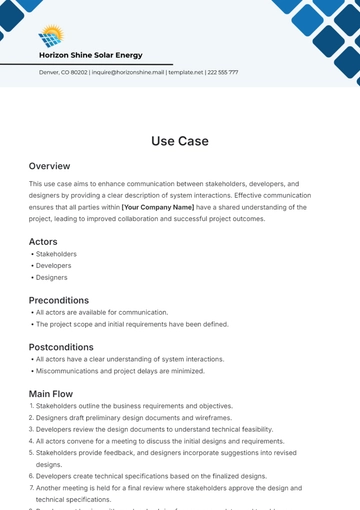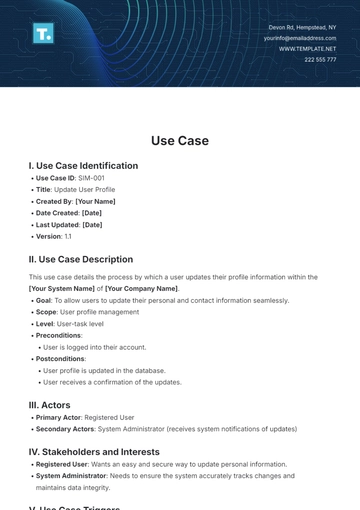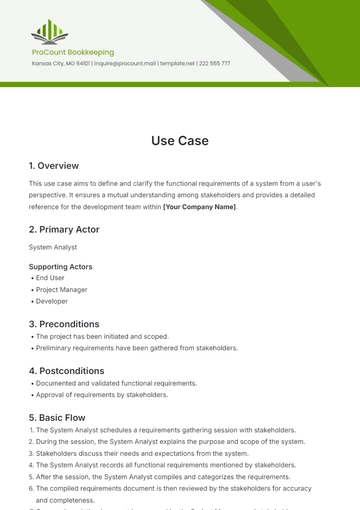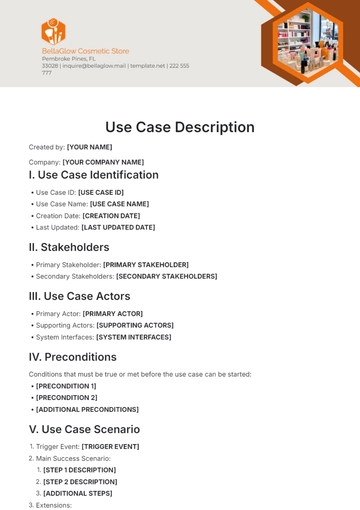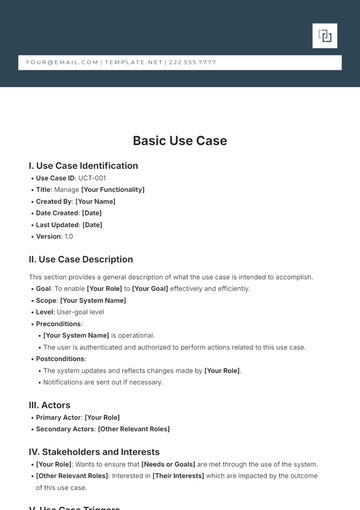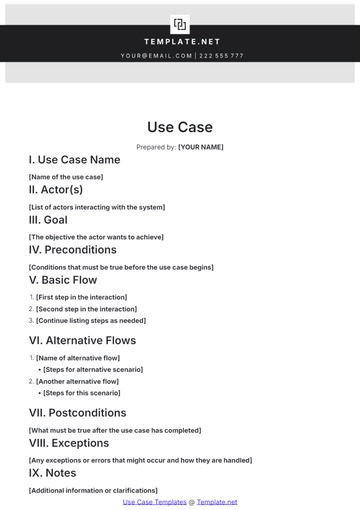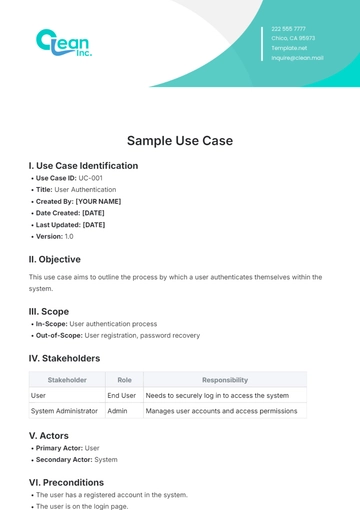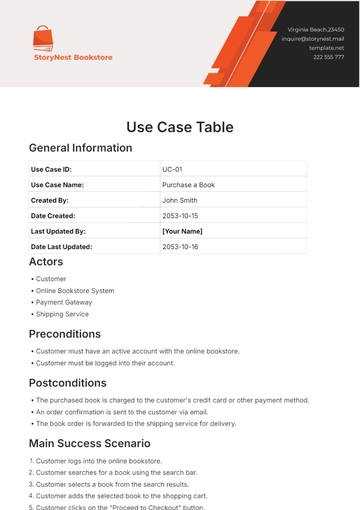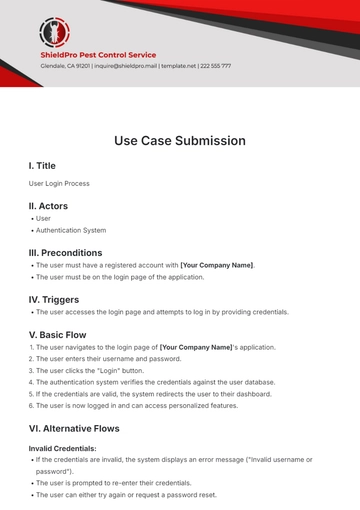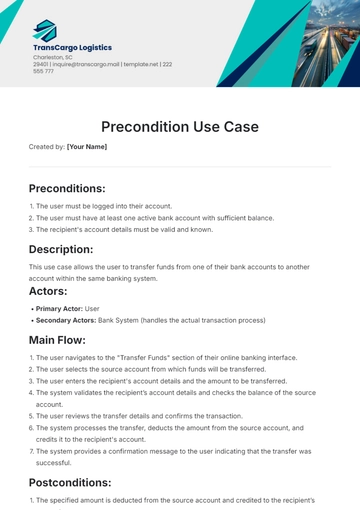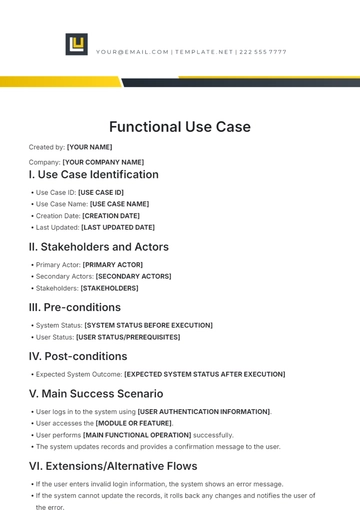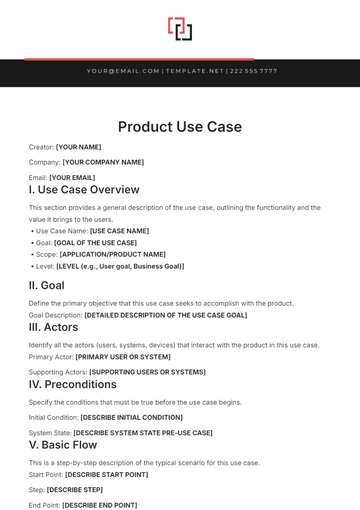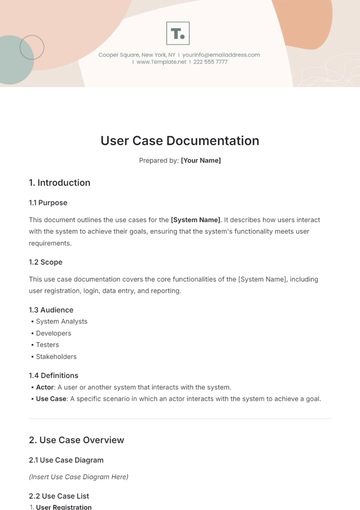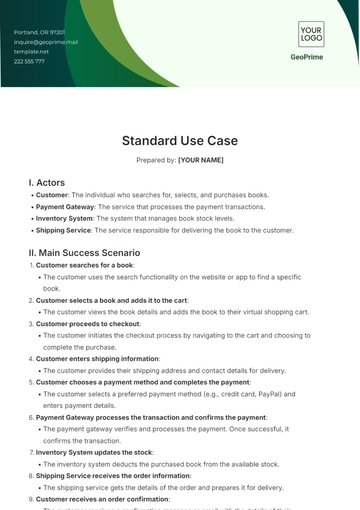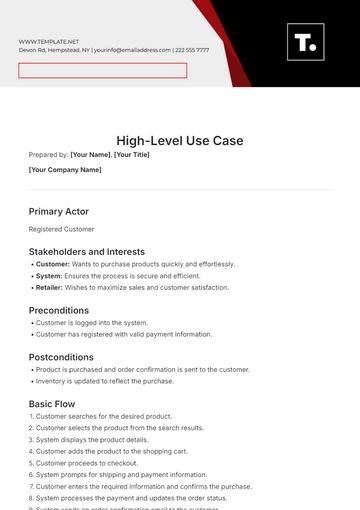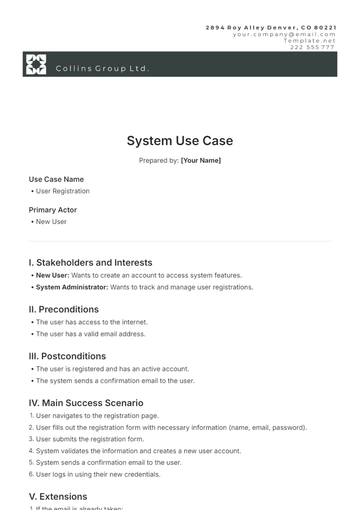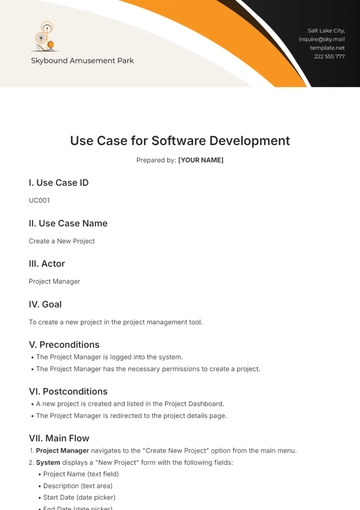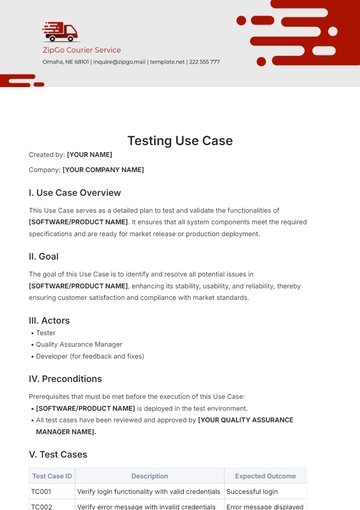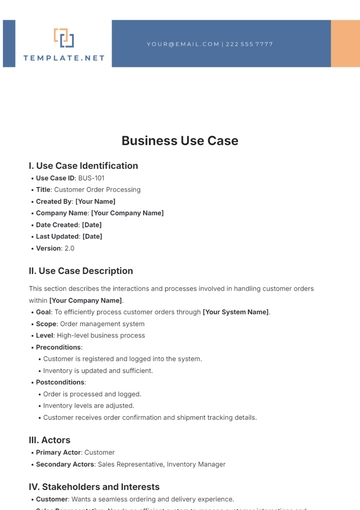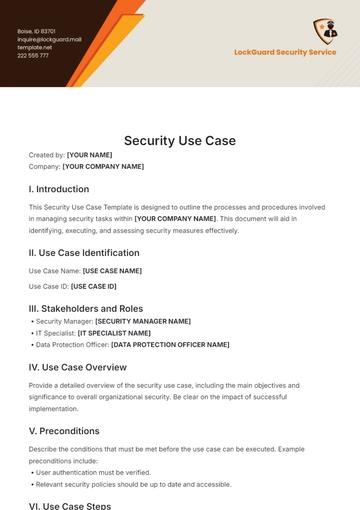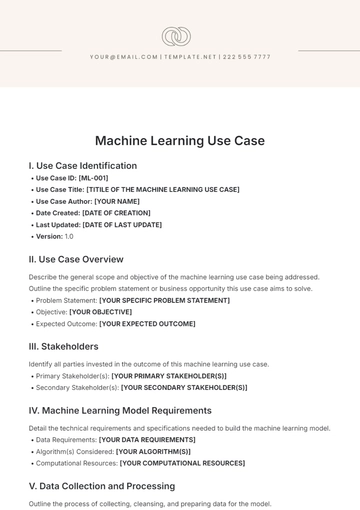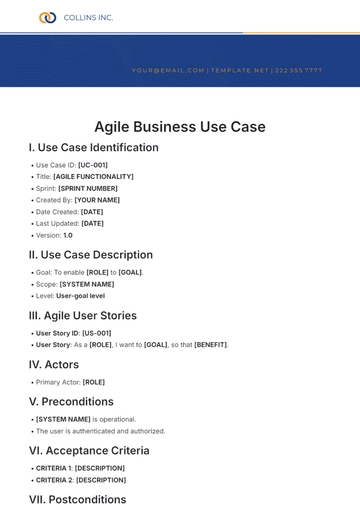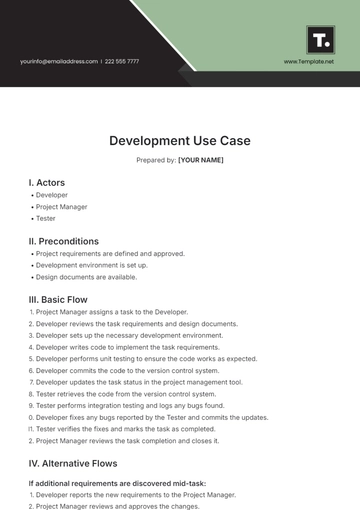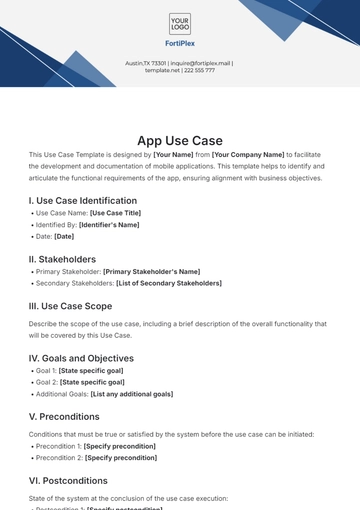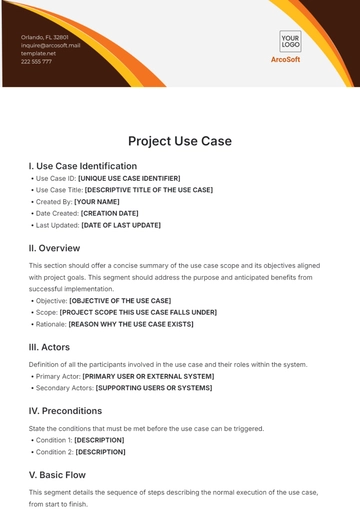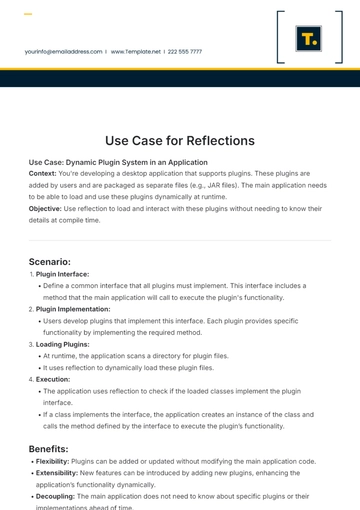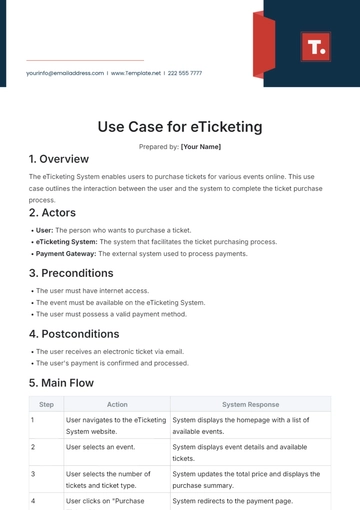Integration Use Case
I. Overview
This use case involves integrating [SYSTEM A] with [SYSTEM B] to facilitate efficient data exchange and synchronization within the organization. The integration aims to streamline processes and enhance collaboration between different departments.
II. Objectives
Define the specific objectives to be achieved through the integration.
III. Actors
Identify the primary and secondary actors involved in the integration.
IV. Preconditions
List any conditions or prerequisites necessary before initiating the integration.
[PRECONDITION 1]: Ensure both [SYSTEM A] and [SYSTEM B] are operational and accessible.
[PRECONDITION 2]: Obtain necessary access credentials for both systems.
[PRECONDITION 3]: Validate compatibility between data formats and protocols used by both systems.
V. Basic Flow
Outline the step-by-step process for the integration.
[STEP 1]: Extract relevant data from [SYSTEM A].
[STEP 2]: Transform data into a standardized format compatible with [SYSTEM B].
[STEP 3]: Transmit processed data to [SYSTEM B].
[STEP 4]: Update records in[SYSTEM B] to reflect changes from [SYSTEM A].
VI. Alternative Flows
Describe any alternative paths or deviations from the basic flow.
[ALTERNATIVE FLOW 1]: If data transmission fails, trigger an automated notification for manual intervention.
[ALTERNATIVE FLOW 2]: If compatibility issues arise, engage technical teams to resolve format discrepancies.
VII. Postconditions
List the expected outcomes or changes resulting from the successful integration.
VIII. Exception Handling
Detail potential exceptions or errors and the corresponding procedures to handle them.
[EXCEPTION 1]: If data validation fails during transmission, log the error and retry after a brief interval.
[EXCEPTION 2]: If connectivity issues persist, escalate to the IT support team for immediate resolution.
IX. Business Rules
Specify any business rules governing the integration process.
[BUSINESS RULE 1]: Data privacy and security protocols must be adhered to throughout the integration process.
[BUSINESS RULE 2]: Integration activities should not disrupt normal operations or compromise data integrity in either system.
X. Success Criteria
Define the criteria for evaluating the success of the integration.
[CRITERION 1]: Data transferred accurately and timely, meeting predefined service level agreements (SLAs).
[CRITERION 2]: Minimal impact on system performance and user experience during integration activities.
XI. Approval
Document the approval process for validating the integration.
Prepared by: [YOUR NAME], [YOUR TITLE]
Approval by: [APPROVER'S ROLE], [APPROVER'S TITLE]
Review by: [REVIEWER'S ROLE], [REVIEWER'STITLE]
Use Case Templates @ Template.net
